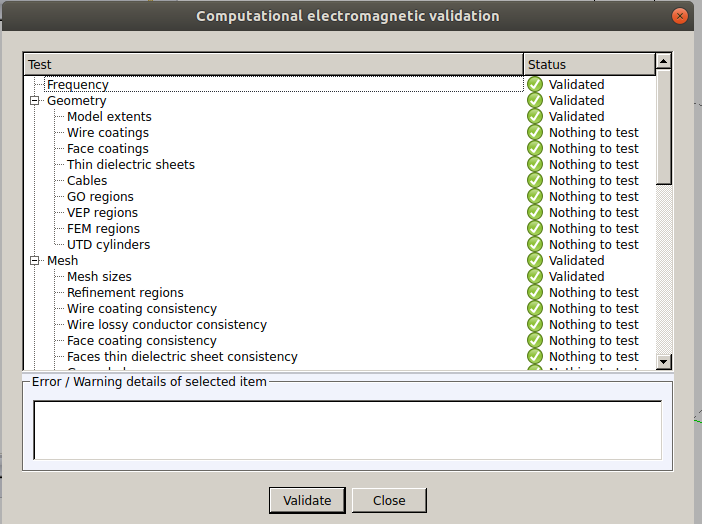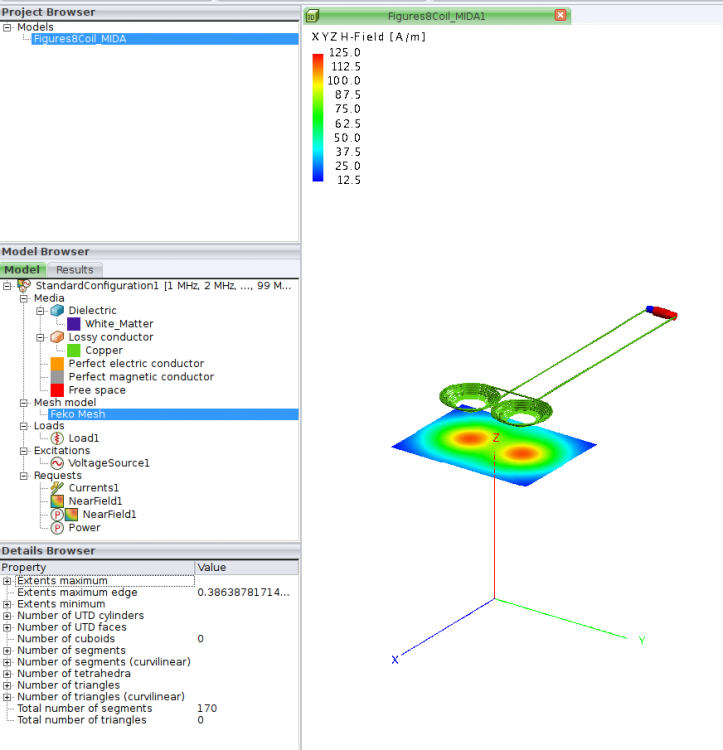Hi,
I imported a mesh from stl file in CADFEKO. When I right click on properties of this geometry, it shows that Front and Back medium are assigned White_matter property, but Face Medium is set to arbitrary Dielectric boundary. I didn't define Dielectric boundary, but I did define White_matter property. Problem is Face medium drop down list does not show White_matter, and I can't select it. As a result mesh has some arbitrary Dielectric boundary.
<?xml version="1.0" encoding="UTF-8"?>
When I mesh model, I receive a Warning 16097.

Next, I executed a frequency sweep solution with following option:

CEM validate didn't detect any issue.

After execution, the solution obtained doesn't show any mesh.
<?xml version="1.0" encoding="UTF-8"?>
What is solution to such a problem?
I have attached both cfx, pfs, and stl file.
Thanks in advance,
FieldForcer
P.S.: Earlier Peter Futter suggested I write lua script. I don't understand workflow of writing such a file to solve mesh issue.
Unable to find an attachment - read this blog